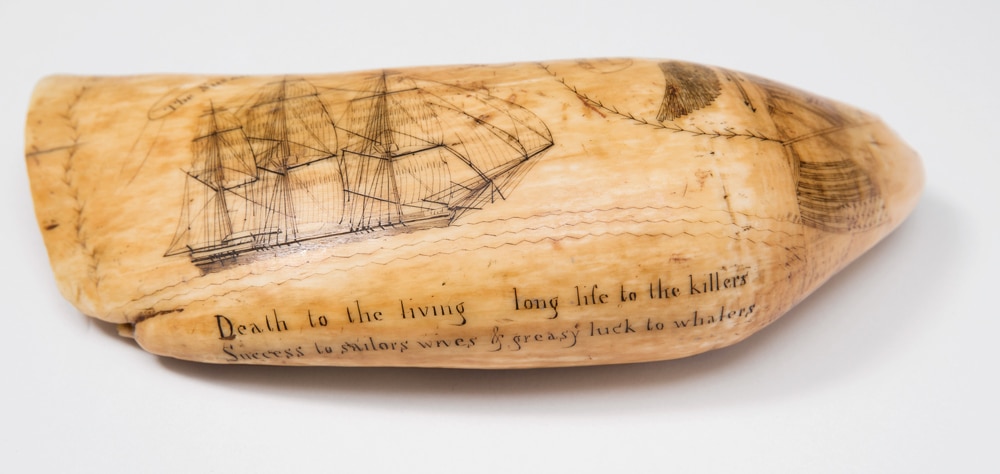Speak, the Tooth | Up Close
In an 1831 catalog of what is today the Peabody Essex Museum in Salem, Massachusetts, there’s an entry for a scrimshaw titled “Tooth of a Sperm Whale, curiously carved.” With it, a second entry: “Another, carved by the same hand.” These two pieces were among the first scrimshaw ever acquired by a museum, and they […]

Coffee By Design | Portland, Maine
Photo Credit : Katherine Keenan
In an 1831 catalog of what is today the Peabody Essex Museum in Salem, Massachusetts, there’s an entry for a scrimshaw titled “Tooth of a Sperm Whale, curiously carved.” With it, a second entry: “Another, carved by the same hand.” These two pieces were among the first scrimshaw ever acquired by a museum, and they went into the collection with no mention of the artist’s name. Which is curious, given that both were signed. And fascinating, given how revered that name is today.
Though little is known about Frederick Myrick, born 1808 on Nantucket, he looms large in the scrimshaw world. The 36 whale teeth he carved during his 1826–1829 voyage on the Nantucket whaler Susan—collectively known as “Susan’s teeth”—became famous with the publication of Everett Crosby’s Susan’s Teeth and Much About Scrimshaw. With that landmark 1955 book (and a little help from celebrity collector John F. Kennedy), the era of scrimshaw appreciation began in earnest, with Myrick as its best-known artisan.
“He’s become sort of the holy grail,” says Michael P. Dyer, curator of maritime history for Massachusetts’s New Bedford Whaling Museum (which owns four Myrick pieces, including the Susan’s tooth pictured above). “The workmanship is superb: He gets the whaling scenes exactly right, the details of the ship he’s depicting are perfect. But he also signed his name, he dated the pieces, he included the actual name of the ship—and you just never see that in scrimshaw.”
Something else you never see: the old whaling toast inscribed on most of Myrick’s pieces, Death to the living / long life to the killers / Success to sailors’ wives & greasy luck to whalers. Stark and poetic, the quote appears virtually nowhere else in scrimshaw, and for Dyer it combines with Myrick’s painstakingly detailed scenes and symbols to capture the whaleman’s life almost like, well, Moby-Dick in miniature.
“It’s kill or be killed, and let’s hope that we do the killing and make a living at it—that’s what it was all about, you know?” he says. “If you look at a Susan’s tooth, all four sides, you’re done. You’ve got everything you need to know about Yankee whaling right there.” —Jenn Johnson
The New Bedford Whaling Museum’s Nautical Antiques Show is set for 5/4, followed by its 30th annual Scrimshaw Weekend 5/5–5/6. For more information, go to whalingmuseum.org.







